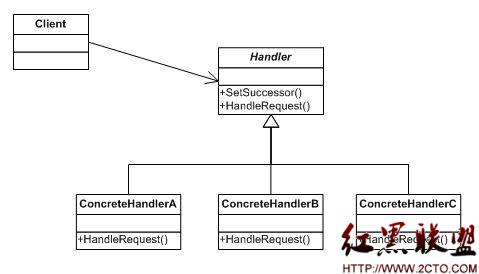三维计算几何模板整理
/***********基础*************/
struct Point3 {
double x, y, z;
Point3(double x=0, double y=0, double z=0):x(x),y(y),z(z) { }
};
typedef Point3 Vector3;
Vector3 operator + (const Vector3& A, const Vector3& B) { return Vector3(A.x+B.x, A.y+B.y, A.z+B.z); }
Vector3 operator - (const Point3& A, const Point3& B) { return Vector3(A.x-B.x, A.y-B.y, A.z-B.z); }
Vector3 operator * (const Vector3& A, double p) { return Vector3(A.x*p, A.y*p, A.z*p); }
Vector3 operator / (const Vector3& A, double p) { return Vector3(A.x/p, A.y/p, A.z/p); }
double Dot(const Vector3& A, const Vector3& B) { return A.x*B.x + A.y*B.y + A.z*B.z; }
double Length(const Vector3& A) { return sqrt(Dot(A, A)); }
double Angle(const Vector3& A, const Vector3& B) { return acos(Dot(A, B) / Length(A) / Length(B)); }
Vector3 Cross(const Vector3& A, const Vector3& B) { return Vector3(A.y*B.z - A.z*B.y, A.z*B.x - A.x*B.z, A.x*B.y - A.y*B.x); }
double Area2(const Point3& A, const Point3& B, const Point3& C) { return Length(Cross(B-A, C-A)); }
double Volume6(const Point3& A, const Point3& B, const Point3& C, const Point3& D) { return Dot(D-A, Cross(B-A, C-A)); }
// 四面体的重心
Point3 Centroid(const Point3& A, const Point3& B, const Point3& C, const Point3& D) { return (A + B + C + D)/4.0; }
/************点线面*************/
// 点p到平面p0-n的距离。n必须为单位向量
double DistanceToPlane(const Point3& p, const Point3& p0, const Vector3& n) {
return fabs(Dot(p-p0, n)); // 如果不取绝对值,得到的是有向距离
}
// 点p在平面p0-n上的投影。n必须为单位向量
Point3 GetPlaneProjection(const Point3& p, const Point3& p0, const Vector3& n) {
return p-n*Dot(p-p0, n);
}
//直线p1-p2 与平面p0-n的交点
Point3 LinePlaneIntersection(Point3 p1, Point3 p2, Point3 p0, Vector3 n)
{
vector3 = p2-p1;
double t = (Dot(n, p0-p1) / Dot(n, p2-p1));//分母为0,直线与平面平行或在平面上
return p1 + v*t; //如果是线段 判断t是否在0~1之间
}
// 点P到直线AB的距离
double DistanceToLine(const Point3& P, const Point3& A, const Point3& B) {
Vector3 v1 = B - A, v2 = P - A;
return Length(Cross(v1, v2)) / Length(v1);
}
//点到线段的距离
double DistanceToSeg(Point3 p, Point3 a, Point3 b)
{
if(a == b) return Length(p-a);
Vector3 v1 = b-a, v2 = p-a, v3 = p-b;
if(dcmp(Dot(v1, v2)) < 0) return Length(v2);
else if(dcmp(Dot(v1, v3)) > 0) return Length(v3);
else return Length(Cross(v1, v2)) / Length(v1);
}
//求异面直线 p1+s*u与p2+t*v的公垂线对应的s 如果平行|重合,返回false
bool LineDistance3D(Point3 p1, Vector3 u, Point3 p2, Vector3 v, double& s)
{
double b = Dot(u, u) * Dot(v, v) - Dot(u, v) * Dot(u, v);
if(dcmp(b) == 0) return false;
double a = Dot(u, v) * Dot(v, p1-p2) - Dot(v, v) * Dot(u, p1-p2);
s = a/b;
return true;
}
// p1和p2是否在线段a-b的同侧
bool SameSide(const Point3& p1, const Point3& p2, const Point3& a, const Point3& b) {
return dcmp(Dot(Cross(b-a, p1-a), Cross(b-a, p2-a))) >= 0;
}
// 点P在三角形P0, P1, P2中
bool PointInTri(const Point3& P, const Point3& P0, const Point3& P1, const Point3& P2) {
return SameSide(P, P0, P1, P2) && SameSide(P, P1, P0, P2) && SameSide(P, P2, P0, P1);
}
// 三角形P0P1P2是否和线段AB相交
bool TriSegIntersection(const Point3& P0, const Point3& P1, const Point3& P2, const Point3& A, const Point3& B, Point3& P) {
Vector3 n = Cross(P1-P0, P2-P0);
if(dcmp(Dot(n, B-A)) == 0) return false; // 线段A-B和平面P0P1P2平行或共面
else { // 平面A和直线P1-P2有惟一交点
double t = Dot(n, P0-A) / Dot(n, B-A);
if(dcmp(t) < 0 || dcmp(t-1) > 0) return false; // 不在线段AB上
P = A + (B-A)*t; // 交点
return PointInTri(P, P0, P1, P2);
}
}
//空间两三角形是否相交
bool TriTriIntersection(Point3* T1, Point3* T2) {
Point3 P;
for(int i = 0; i < 3; i++) {
if(TriSegIntersection(T1[0], T1[1], T1[2], T2[i], T2[(i+1)%3], P)) return true;
if(TriSegIntersection(T2[0], T2[1], T2[2], T1[i], T1[(i+1)%3], P)) return true;
}
return false;
}
//空间两直线上最近点对 返回最近距离 点对保存在ans1 ans2中
double SegSegDistance(Point3 a1, Point3 b1, Point3 a2, Point b2)
{
Vector v1 = (a1-b1), v2 = (a2-b2);
Vector N = Cross(v1, v2);
Vector ab = (a1-a2);
double ans = Dot(N, ab) / Length(N);
Point p1 = a1, p2 = a2;
Vector d1 = b1-a1, d2 = b2-a2;
double t1, t2;
t1 = Dot((Cross(p2-p1, d2)), Cross(d1, d2));
t2 = Dot((Cross(p2-p1, d1)), Cross(d1, d2));
double dd = Length((Cross(d1, d2)));
t1 /= dd*dd;
t2 /= dd*dd;
ans1 = (a1 + (b1-a1)*t1);
ans2 = (a2 + (b2-a2)*t2);
return fabs(ans);
}
// 判断P是否在三角形A, B, C中,并且到三条边的距离都至少为mindist。保证P, A, B, C共面
bool InsideWithMinDistance(const Point3& P, const Point3& A, const Point3& B, const Point3& C, double mindist) {
if(!PointInTri(P, A, B, C)) return false;
if(DistanceToLine(P, A, B) < mindist) return false;
if(DistanceToLine(P, B, C) < mindist) return false;
if(DistanceToLine(P, C, A) < mindist) return false;
return true;
}
// 判断P是否在凸四边形ABCD(顺时针或逆时针)中,并且到四条边的距离都至少为mindist。保证P, A, B, C, D共面
bool InsideWithMinDistance(const Point3& P, const Point3& A, const Point3& B, const Point3& C, const Point3& D, double mindist) {
if(!PointInTri(P, A, B, C)) return false;
if(!PointInTri(P, C, D, A)) return false;
if(DistanceToLine(P, A, B) < mindist) return false;
if(DistanceToLine(P, B, C) < mindist) return false;
if(DistanceToLine(P, C, D) < mindist) return false;
if(DistanceToLine(P, D, A) < mindist) return false;
return true;
}
/*************凸包相关问题*******************/
//加干扰
double rand01() { return rand() / (double)RAND_MAX; }
double randeps() { return (rand01() - 0.5) * eps; }
Point3 add_noise(const Point3& p) {
return Point3(p.x + randeps(), p.y + randeps(), p.z + randeps());
}
struct Face {
int v[3];
Face(int a, int b, int c) { v[0] = a; v[1] = b; v[2] = c; }
Vector3 Normal(const vector<Point3>& P) const {
return Cross(P[v[1]]-P[v[0]], P[v[2]]-P[v[0]]);
}
// f是否能看见P[i]
int CanSee(const vector<Point3>& P, int i) const {
return Dot(P[i]-P[v[0]], Normal(P)) > 0;
}
};
// 增量法求三维凸包
// 注意:没有考虑各种特殊情况(如四点共面)。实践中,请在调用前对输入点进行微小扰动
vector<Face> CH3D(const vector<Point3>& P) {
int n = P.size();
vector<vector<int> > vis(n);
for(int i = 0; i < n; i++) vis[i].resize(n);
vector<Face> cur;
cur.push_back(Face(0, 1, 2)); // 由于已经进行扰动,前三个点不共线
cur.push_back(Face(2, 1, 0));
for(int i = 3; i < n; i++) {
vector<Face> next;
// 计算每条边的“左面”的可见性
for(int j = 0; j < cur.size(); j++) {
Face& f = cur[j];
int res = f.CanSee(P, i);
if(!res) next.push_back(f);
for(int k = 0; k < 3; k++) vis[f.v[k]][f.v[(k+1)%3]] = res;
}
for(int j = 0; j < cur.size(); j++)
for(int k = 0; k < 3; k++) {
int a = cur[j].v[k], b = cur[j].v[(k+1)%3];
if(vis[a][b] != vis[b][a] && vis[a][b]) // (a,b)是分界线,左边对P[i]可见
next.push_back(Face(a, b, i));
}
cur = next;
}
return cur;
}
struct ConvexPolyhedron {
int n;
vector<Point3> P, P2;
vector<Face> faces;
bool read() {
if(scanf("%d", &n) != 1) return false;
P.resize(n);
P2.resize(n);
for(int i = 0; i < n; i++) { P[i] = read_point3(); P2[i] = add_noise(P[i]); }
faces = CH3D(P2);
return true;
}
//三维凸包重心
Point3 centroid() {
Point3 C = P[0];
double totv = 0;
Point3 tot(0,0,0);
for(int i = 0; i < faces.size(); i++) {
Point3 p1 = P[faces[i].v[0]], p2 = P[faces[i].v补充:软件开发 , C++ ,





